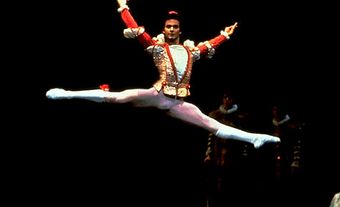Fortier Danse Création
Informally launched as a pick-up company under the name Théâtre Danse Paul-André FORTIER, the troupe officially became Fortier Danse Création in 1983. Early pieces such as Parlez-moi donc du cul de mon enfance (1979) and Violence, décadence et indécence (1980) were provocative, theatrical, disturbing and iconoclastic. These group works established the degree to which this troupe would define itself in opposition to traditional dance.
Fortier's works were performed throughout Canada and in Europe; by 1984 the company had also performed in New York's Riverside Church. The social critique and sexual innuendo present in the various pieces set a trend for much of Montréal's choreographic experimentation of that period, testifying to the growing interest in dance theatre.
As artistic director and chief choreographer for his new company, Fortier had little time to dance. In 1987 he participated in founding MONTRÉAL DANSE, a small repertory company established to produce original works by a variety of choreographers. He returned to dancing at Fortier Danse Création with Fortier en Solo, an evening of short commissioned pieces by fellow dancemakers from Québec. Fortier Danse Création was then transmuted into a vehicle for solo works created and danced by Fortier himself. Les males heures (1989) closed this creative cycle of dance-theatre pieces filled with iconoclasm and black humour.
Works choreographed by Fortier in the 1990s display a new reliance on the visual arts and a movement away from theatre. La tentation de la transparence (1991) and Bras de plomb (1993) were done in collaboration with renowned Montréal visual artist Betty Goodwin. The works became more streamlined, less overtly theatrical, and displayed Fortier's fine performance skills. They were suggestive and subtle, the grotesque movements of social caricature having given way to simple, beautiful and plastic movement. With La part des anges (1996) Fortier continued this softer, minimalist trend, and returned to a group piece for 4 dancers. Jeux de Fous (1998) ventures into a new dada-inspired movement vocabulary.

 Share on Facebook
Share on Facebook Share on X
Share on X Share by Email
Share by Email Share on Google Classroom
Share on Google Classroom


